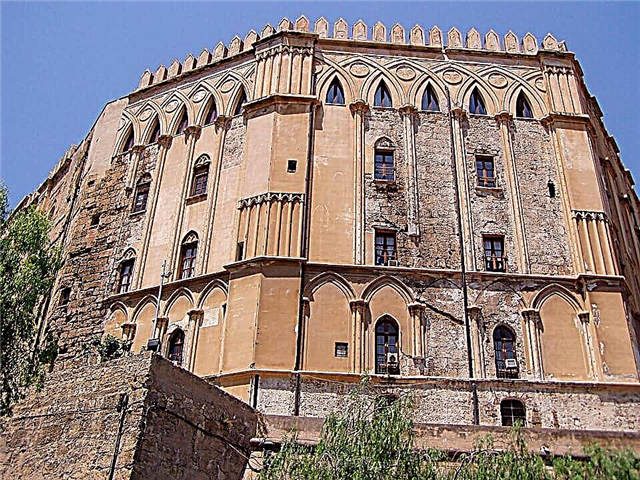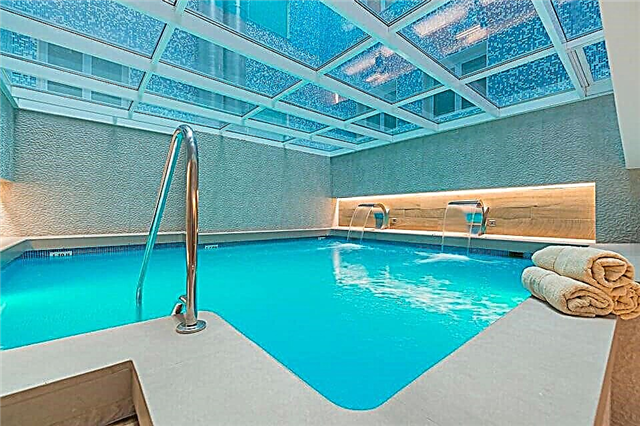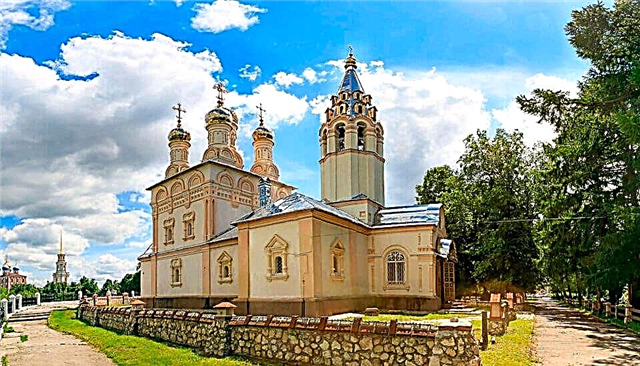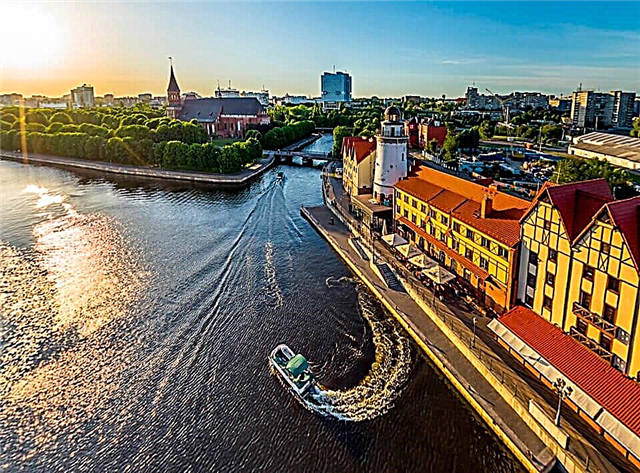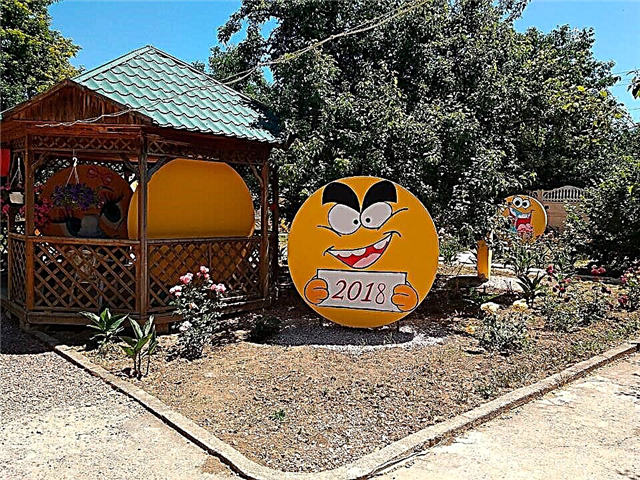Address: New York, Manhattan
Opening date: 1977 year
Coordinates: 40 ° 43'20.4 "N 73 ° 59'34.2" W
Content:
Short description
The flight of imagination of modern architects and designers knows no boundaries - a person living or visiting one of the largest cities in the world, New York, can easily be convinced of this.

The building of the new museum of contemporary art in the USA amazes not only with its unusual architectural forms, but also constantly makes the passer-by ponder the question: "How does it even stand on the ground and does not fall on people with multi-ton concrete blocks?"
Such a strange building appeared thanks to a project of Japanese engineers from the SANAA bureau, who decided to boldly challenge the gravity of our planet and all the laws of physics in general. Six huge boxes, which were deliberately set on top of each other as if in a random order, are about to crumble and destroy all nearby buildings. Naturally, this visual effect is deceiving. Thanks to long development, the building was built taking into account all kinds of cataclysms and every part of it was tested for strength. Based on this, we can draw a certain conclusion: the building of the Museum of Modern Arts in New York, despite its urbanistic and seemingly "unstable" appearance, was built for centuries.

History of the museum, development and construction of a new building
Not all tourists, travel enthusiasts, and sightseeing aficionados know that the Museum of Modern Art was opened back in 1977, when the culture of the United States, like many other countries, was experiencing a real boom. And it's not about flared trousers and crowds of hippies wandering around New York and promoting a close connection with nature and free, non-binding love. Contemporary sculptures and paintings that challenge society, various compositions that were largely intended exclusively for the adult category, a modern view of the world and a look at the confrontation of superpowers, found their place in the Museum of Contemporary Art. Ms Marsha Tucker, who previously worked with the Whitney Gallery, was not afraid of provocative exhibits and provocative exhibitions. However, her craving for everything new, for bold experiments did not like the management of the Gallery, and she, one might say, found herself as the director of the Museum of Contemporary Art.
In 2007, the museum, which is visited annually by millions of tourists and locals, celebrated its 30th anniversary. A kind of gift - the opening of a new building, which was built not in a respectable area of New York, but in Manhattan, among the slums and favorite habitats of people who do not have a roof over their heads. A huge number of shops selling wholesale and inexpensive things, warehouses, unsightly restaurants with dubious quality food, which are popularly referred to as "eateries" - all this surrounds the new building of the Museum of Contemporary Arts of the USA.

The construction of an ultra-modern building in such an area began not because land there is extremely cheap (by New York standards, of course), but because the architects decided not only to challenge gravity, but also to sweep aside all "bourgeois values." The Museum of Modern Art, as if from the future, burst into the unremarkable Bowery Street in December 2007, and almost instantly became one of the main attractions of the huge city. Surprisingly, after the construction of the building, property prices in the slum area began to skyrocket. Many reputable realtors claim that literally in 10-15 years, Bowery Street will become, thanks to an unusual building, the residence of the bohemian New York, and the cost of even a small apartment there will be calculated in the amount of six or even seven zeros. For New York, this state of affairs is not at all new: quite often, after the construction of a skyscraper or museum, the land around an ultramodern building becomes "golden".
The building of the Museum of Modern Art
Initially, the architects wanted to make the cladding panels of the building from thin, but at the same time, high-strength steel. As everyone is well aware, New York, day and night, is simply "drowned" in smog "due to the huge number of cars and industrial buildings. Steel cladding would turn black in literally a few months, and it would take even longer to clean it of soot. Therefore, the Japanese decided to revet the building with aluminum panels, which, of course, is more expensive, but of better quality, and as a result will lead to savings in money that would have been spent on cleaning.

Besides, the entire building of the modern museum of art in New York was covered with an aluminum meshused by workers in the construction of highways. Such an interesting solution performs two functions at once, depending on the lighting, the building can look dazzling white or gray. Moreover, the grid nullified the sharp corners of the "randomly" piled boxes on top of each other, and made the building blurred, merging with the horizon.
There are no windows in the museum, by the way, there are practically none: only on the fifth floor, where the educational center is located, you can see the so-called "glass strip". Glass was widely used on the first floor, with the aim of attracting visitors to the Museum of Modern Art, amazed by the amazing interior of the hall, and to produce a fantastic effect at night. As soon as the last ray of the sun disappears over the horizon, thousands of lamps light up in the hall: it seems as if a huge building, violating all the existing laws of physics, hovered above the ground on a pillow of light. Particularly impressionable persons fall into a state of mild shock, wondering how a majestic building, whose height is 50 meters, can stay on the "light cushion", where the main building material is glass.

In the building of the new Museum of Contemporary Arts
In the basement of the building there is a theater in which modern troupes of actors show their art, it is called "Black Box". For those who are not yet familiar with the English language, this name can be literally translated into Russian as "black box". Its walls are painted ... dazzling white. “Why, then, does the name say something completely different?”, Practically any tourist can ask himself a question. This is not surprising, since we are talking about one of the most unusual modern buildings in the world, which was classified by a reputable travel magazine as one of the 7 wonders of modern architecture. Above the "light cushion", which was already mentioned above, exhibition halls are located on three floors. The floor on these floors is filled with concrete, along which cracks are spreading, this is not a mistake in the project, this is how Japanese designers saw the interior of the museum. These three floors are home to contemporary art. Surprisingly, but even an aspiring artist or sculptor can organize their own exhibition in a new museum of contemporary artthat no one has heard of yet. It is in this building that contemporary talents are recognized and renowned.
On the fifth floor, as mentioned above, there is a general education center, where you can get acquainted with the latest achievements in various fields of science. The administration of the museum works on the floor above, planning new exhibitions and monitoring what is happening in the building. The seventh floor of the museum is intended for various events. Authoritative critics express their point of view on it, and in addition, it can be rented for various conferences.Visitors do not have access to the last floor, because it is on it that all the equipment is located, which is responsible for the indoor climate, lighting and much more. As in any museum, the ultra-modern building houses a cozy cafe where you can spend time enjoying a cup of aromatic coffee, and a bookstore, which mostly contains literature on contemporary art.

Whatever the ardent opponents of the urban style, in which the new museum of modern art in New York was built, the building shows how far technological progress has progressed in 30 years, and how much the ideas of modern architects and designers who are able to create thanks to ultra-modern technologies and materials have changed. real miracles.

